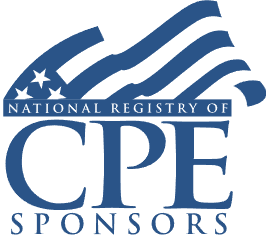S Corporation Debt: Planning Opportunities With Shareholder Loans to S Corps
Utilizing Debt Basis, Ordering Rules for Distributions and Repayments, Documenting Loans to Avoid IRS Challenge

Welcome! Strafford is now BARBRI! The expert courses you know from the trusted global leader in legal education.
Course Details
- smart_display Format
On-Demand
- signal_cellular_alt Difficulty Level
Intermediate
- work Practice Area
Corporate Tax
- event Date
Wednesday, November 2, 2016
- schedule Time
1:00 PM E.T.
- timer Program Length
110 minutes
-
BARBRI is a NASBA CPE sponsor and this 110-minute webinar is accredited for 2.0 CPE credits.
-
BARBRI is an IRS-approved continuing education provider offering certified courses for Enrolled Agents (EA) and Tax Return Preparers (RTRP).
This course will provide tax advisers with a comprehensive and practical guide to structuring S corporation shareholder debt transactions to ensure the debt will be respected for basis increase purposes. The panel will outline what shareholder debts will increase debt basis, describe best practices for documenting loan transactions between shareholder and S corporations, discuss repayment consequences, and detail debt basis calculations.
Faculty
Description
A significant benefit of ownership in an S corporation over owning partnership shares is the ability of S corporation shareholders to create debt basis by making a direct loan to the corporation. This debt basis can be used to offset distribution gain or limitation of loss deduction when losses exceed the shareholder’s stock basis in the entity.
Calculating and utilizing debt basis creates both challenges and opportunities for tax advisers. By accurately tracking debt basis, advisers can engage in year-end planning steps to manage the tax consequences of cash receipts by the S corporation shareholder. Advisers need to be thoroughly familiar with the ordering rules for reduction and restoration of debt basis, and the current year tax treatment of cash payments to shareholders with debt basis to optimize tax results.
Situations such as when a shareholder has made multiple loans to the S corporation, or when the shareholder takes cash as repayment of a loan to the corporation can complicate the tax treatment. Shareholders and their advisers can avoid negative tax consequences by properly structuring and documenting payments and distributions to a shareholder with debt basis.
Listen as our experienced panel of tax advisers provides a detailed and practical guide to the reporting challenges and planning opportunities of S corporation debt basis, and outlines best practices to help S corp shareholders avoid unnecessary tax.
Outline
- Interplay between stock basis and debt basis
- Debt basis and repayment of shareholder loans contrasted with distributions
- Ordering rules for reduction and restoration of debt basis
- Special circumstances
- Planning opportunities
Benefits
The panel will discuss these and other important topics:
- What specific loans from shareholders to S corporations serve to increase the shareholder’s debt basis?
- What are the ordering rules for distributions to shareholders who have debt basis but zero stock basis?
- Documentation requirement and best practices for supporting distributions against debt basis
- Rules governing restoration of debt basis
- Special rules when a shareholder has more than one loan to the S corporation
- Planning opportunities involving shareholder loans to S corporations
NASBA Details
Learning Objectives
After completing this course, you will be able to:
- Recognize shareholder loans to S corporations that increase the shareholder’s debt basis in the corporation
- Identify the ordering rules for reduction of debt basis
- Distinguish between distributions and repayment of loan documentation requirements
- Discern when an unprofitable S corporation may repay shareholder loans without paying salary
- Field of Study: Taxes
- Level of Knowledge: Intermediate
- Advance Preparation: None
- Teaching Method: Seminar/Lecture
- Delivery Method: Group-Internet (via computer)
- Attendance Monitoring Method: Attendance is monitored electronically via a participant's PIN and through a series of attendance verification prompts displayed throughout the program
- Prerequisite:
Three years+ business or public firm experience at mid-level within the organization, preparing complex tax forms and schedules, supervising other preparers/accountants. Specific and detailed knowledge and understanding of S corporation stock basis rules, S corporation ownership structure, operating agreements and distributions; familiarity with the rules governing Accumulated Adjustment Accounts (AAA), and difference in treatment of debt between partnerships and S corporations; and basis calculations for S corporation shareholders according to IRC sections 1366 and 1367.

Strafford Publications, Inc. is registered with the National Association of State Boards of Accountancy (NASBA) as a sponsor of continuing professional education on the National Registry of CPE Sponsors. State boards of Accountancy have final authority on the acceptance of individual courses for CPE Credits. Complaints regarding registered sponsons may be submitted to NASBA through its website: www.nasbaregistry.org.

Strafford is an IRS-approved continuing education provider offering certified courses for Enrolled Agents (EA) and Tax Return Preparers (RTRP).
Unlimited access to premium CLE courses:
- Annual access
- Available live and on-demand
- Best for attorneys and legal professionals
Unlimited access to premium CPE courses.:
- Annual access
- Available live and on-demand
- Best for CPAs and tax professionals
Unlimited access to premium CLE, CPE, Professional Skills and Practice-Ready courses.:
- Annual access
- Available live and on-demand
- Best for legal, accounting, and tax professionals
Unlimited access to Professional Skills and Practice-Ready courses:
- Annual access
- Available on-demand
- Best for new attorneys
Related Courses

Transaction Tax Challenges in Mergers and Acquisitions
Available On-Demand

Form 3115 Change in Accounting Method: Navigating the IRS Repair Regulations
Available On-Demand